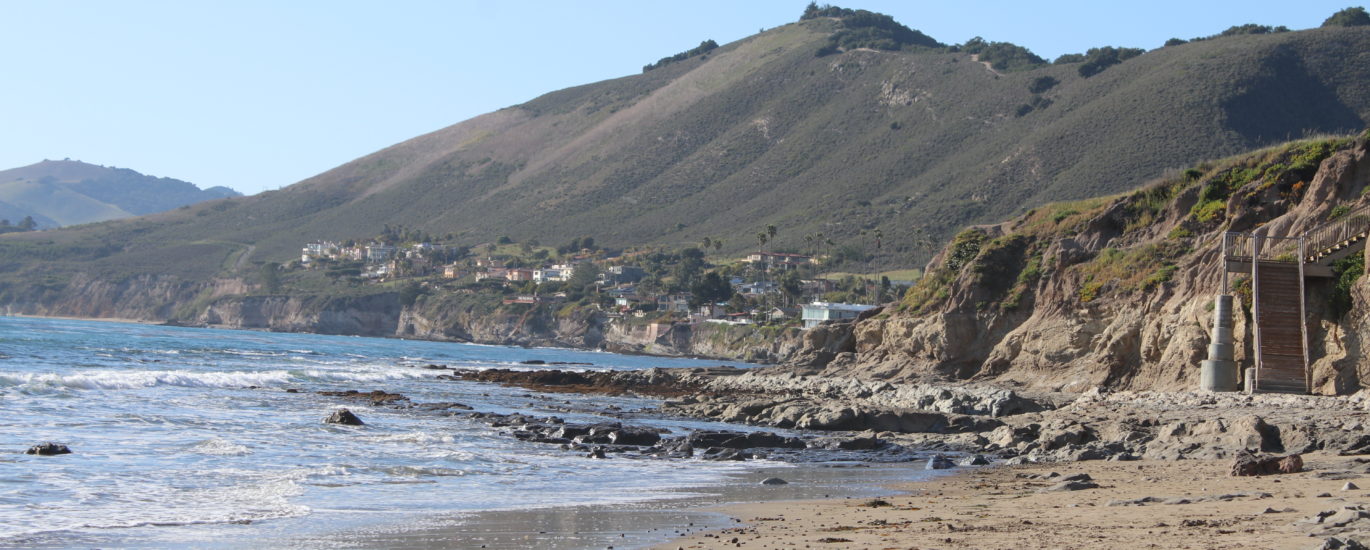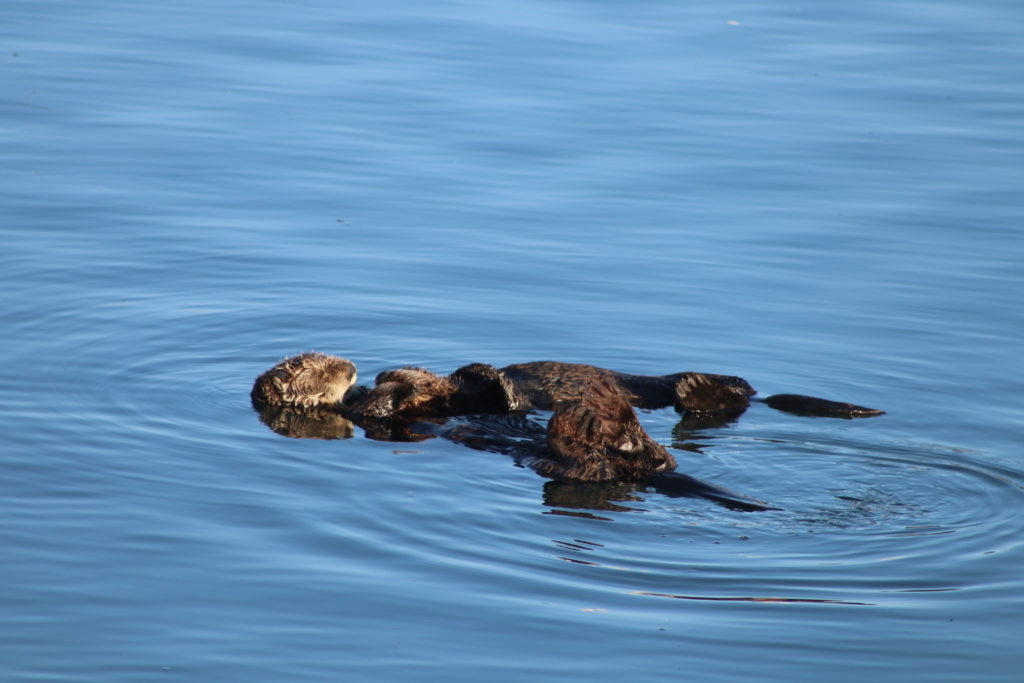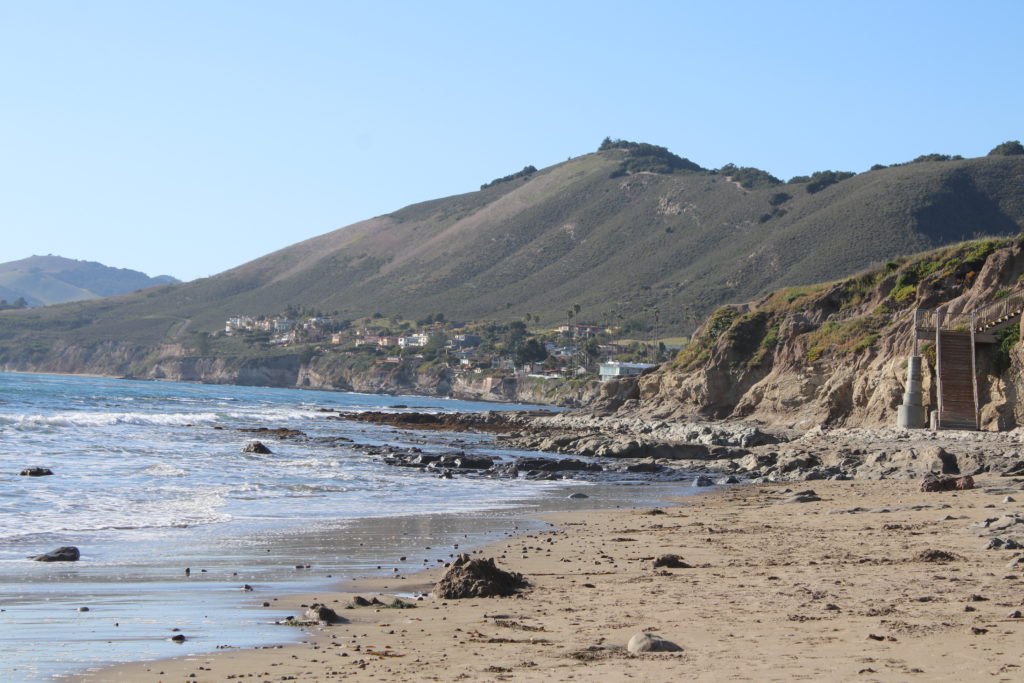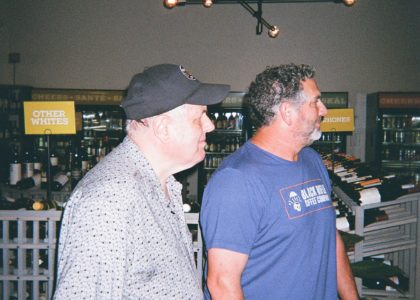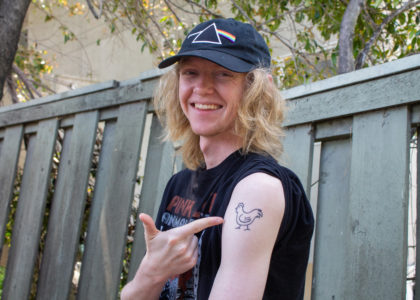By Stephanie Zappelli
On a foggy morning in Morro Bay, sea otters summersault in the harbor while fishermen heave gear onto their boats. Across the water, surfers rip across silver-blue waves. The Chumash can sometimes be seen climbing Morro Rock — one of many sacred sites along the bay.
This coastline may soon be protected by the federal government.
Since 2013, the Northern Chumash Tribe has been working to designate 156 miles of the California Coast as a national marine sanctuary, according to their website. This would be the first tribally-nominated sanctuary in the United States.
The Chumash Heritage National Marine Sanctuary would stretch from Cambria to the middle of Santa Barbara — filling the gap between the Monterey Bay National Marine Sanctuary and the Channel Islands National Marine Sanctuary.
The National Oceanic and Atmospheric Administration (NOAA) collaborates with local and state groups to manage the sanctuaries, which would give the tribe a say in how their ancestral land is managed. The Chumash are now one step closer to designating the sanctuary.
“The Chumash are tasked by their elders to protect the Earth and protect the ocean,” said P.J. Webb, a public interest attorney and longtime collaborator with the Chumash. “A national marine sanctuary is another tool to help them in their ongoing task of respecting the Earth.”
NOAA has a four-step process for designating national marine sanctuaries. On Jan. 31, they completed step one: the scoping process, when people could submit suggestions and concerns to NOAA about the sanctuary.
NOAA received 22,479 comments during the 83-day scoping process, according to Paul Michel, the NOAA Sanctuaries West Regional Policy Coordinator. NOAA is still organizing the comments, but so far it looks like almost 98% of comments supported the sanctuary, 1.4% opposed and 0.6% shared no opinion, Michel said.
Still, he said, “this is not a popularity contest.” The purpose of the scoping phase is to gain specific suggestions for the management of the sanctuary, Michel said.
Now, NOAA is in the middle of step two: drafting the sanctuary proposal, where they use public comments to draw the sanctuary’s boundaries, draft a management plan and an environmental impact statement. NOAA should release the drafts to the public in about a year, Michel said. Another public comment period will follow, NOAA will update the drafts and then publish final plans — which Michel said should be ready in 2023.
“The incredible outpouring of support for the Chumash Heritage National Marine Sanctuary shows just how much people care about this incredible part of the world,” said Violet Sage Walker, Northern Chumash Tribal Council Chairwoman and the daughter of original nominator Fred Collins, in a news release.
The Chumash have lived on the Central Coast for at least 20,000 years, and hold generations of traditional knowledge about the land. This would make them valuable partners in managing the land, public interest attorney P.J. Webb said.
“You bring a lot of skill to the table, you bring a lot of traditional ecological knowledge,” she said. “They’ve learned a lot living here.”
National marine sanctuaries use ecosystem-based management, which means they consider the health of all parts of the ecosystem in their decisions. This approach aligns with Chumash values, Webb said.
The Chumash live by the concept of thrivability, which is a step further than sustainability — it asks humans to restore ecosystems so they’re as healthy as they were before colonization, according to Webb.
“We want it to flourish,” Webb said.
Marine sanctuaries have an advisory council made of representatives for different stakeholder groups like fishing, tourism and more, according to NOAA. The council makes recommendations about potential policies and management strategies to the sanctuary.
In addition to a seat on the council, the Chumash are asking for a separate Office of Tribal Affairs. They would ensure the sanctuary integrates traditional tribal knowledge into managing the land — including crafting scientific research, naming new species and facilitating cultural activities like traditional fishing, according to their public comment.
The sanctuary would also protect Chumash heritage sites.
Video by Ellie Spink
Point Conception is one of the most sacred sites protected by the sanctuary, Webb said. The Chumash call it Humqaq, and believe it to be the Western Gate where souls pass into the afterlife.
“Souls wash in the pools of fresh water and then the light of the setting sun of the west guides the soul through the air to the land of Similaqsa the ancestors and afterlife,” Sage-Walker wrote in a comment submitted to NOAA. “The spirit can be seen shining like a blue light shooting comment through the violet-blue twilight.”
Point Conception also has great ecological value, according to biology professor Crow White. It’s a marker for the Transition Zone — where Northern and Southern marine species overlap.
The waters are warmer south of Point Conception, and cooler to the north. Subtropical species like California sheephead, kelp bass and spiny lobster normally live near Baja, but hang out near Point Conception during warmer years — which happen more often due to climate change, White said.
The Central Coast has an upwelling site, where cold water flows up from the seafloor and carries nutrients to the warmer water above it. These deep-water nutrients feed marine life, creating “a very productive ecosystem,” he said.
Among these ecosystems is a kelp forest home to abalone, crab and sea urchins — a buffet for the local sea otters, according to White.
“This is outstanding habitat to protect,” White said.
The Chumash Heritage National Marine Sanctuary would close the gap between the Monterey Bay National Marine Sanctuary and the Channel Islands National Marine Sanctuary, which is better for marine life, White said.
If one population suffers because of climate change or an oil spill, they can support each other in their rehabilitation.
“There’s connections between different populations,” White said. “If one blinks out then its neighbors can come to the rescue.”
Andrew Christie, director of the local chapter of the Sierra Club, agreed that it’s important to fill what he called the “donut hole” in marine sanctuaries.
“All the things you can’t do in a national marine sanctuary, it’s wide open for them on the Central Coast,” Christie said.
The sanctuary would protect the coast from activities like oil drilling, — which he said is important because the Department of Interior tried to open California coastal waters to new drilling.This was part of former President Donald Trump’s direction to expand oil and gas drilling in the United States, according to the New York Times.
Though the drilling never occurred, Christie said this shows how the coastline is vulnerable to the whims of politicians. Establishing a marine sanctuary would protect the coast from oil drilling no matter who is in office, he said.
A pair of otters floating in Morro Bay Ellie Spink | Mustang News.
Not everyone wants more regulations, however. Fishermen say they want local control of fisheries, not federal control.
Tom Hafer, president of the Morro Bay Commercial Fishermen’s Organization, fishes out his 43-foot long boat the Kathryn. He fishes in the deep sea for spot prawns, and nearshore for gopher cod, sugar bass and kelp bass. Hafer opposes the sanctuary and the federal regulations that come with it.
“It’s an ocean grab,” Hafer said. “It’s building the sanctuaries empire — with sanctuaries all on our coastline.”
Local fishermen say they’re already struggling under existing federal and state regulations, and fear the sanctuary will push them further out of their fishing grounds, Hafer said.
In 2007, California established 29 marine protected areas (MPAs) on the Central Coast, which regulate recreational and commercial uses of the area, according to the Department of Fish and Wildlife.
“When they put the MPAs in, they took all of our best fishing grounds away,” Hafer said. “That devastated the fleet.”
MPAs in Morro Bay pushed fishermen out of large reefs with an abundance of fish into smaller reefs with less fish, he said.
“It’s a domino effect where you gotta fish harder, you gotta fish more days to get the same amount of fish,” Hafer said. “It just takes a lot longer and it’s gonna cost a lot more money.”
While coping with MPAs, fishermen can’t afford more regulations that could be imposed by the national marine sanctuary, according to Hafer.
If the sanctuary is established, Morro Bay fishermen want more influence on the sanctuary advisory council than was given to Monterey fishermen. Hafer said he’d like to see at least half of the council seats given to people who live off of the land’s resources like fishermen, cattlemen and farmers. He said the Monterey Bay sanctuary advisory council gives a disproportionate amount of power to environmental groups.
“It just needs to be more localized,” Hafer said.
Steve Scheiblauer, the former Monterey Bay harbormaster, said the Monterey Bay National Marine Sanctuary lost the trust of fishermen.
“The famous promise made to fishermen was that the sanctuary would not interfere with their livelihoods,” Scheiblauer.
Though the sanctuary never directly regulated fisheries, sanctuary management was heavily involved in creating the California Marine Life Protection Act that established MPAs, Scheiblauer said.
“The sanctuaries use their bully pulpit, if you will, or stature, to get other agencies to create regulations that they want,” he said. “It’s a complete violation of the trust and the promise that was made to us.”
As a result, fishermen don’t trust the Chumash Heritage National Marine Sanctuary, he said.
The central coast line from Shell Beach Ellie Spink | Mustang News.
In addition, Scheiblauer said the coastline doesn’t need more protection, as they have the Clean Water Act, the Magnuson Stevens Fishery Conservation and Management Act protecting fisheries, and countless other laws.
“In terms of protection, it’s an empty suit,” Scheiblauer said.
The San Luis Obispo Board of Supervisors agreed, and voted 3-2 to oppose the sanctuary in 2017, according to the San Luis Obispo Tribune. This year, Supervisor Debbie Arnold submitted a letter to NOAA opposing the project again, citing concern from fishermen and farmers, and saying that there are enough regulations in place protecting ecosystems.
Other people, however, think the sanctuary should prioritize Indigenous rights. Wyatt Kohler, electrical engineering junior and former president of the Cal Poly American Indian Student Association, is among them.
“It’s their land,” Kohler said. “They’ve been here for thousands and thousands of years.”
When Europeans colonized the United States, “their connection to the land was only as much as they could sell it for, or what they could grow off it,” Kohler said. Indigenous peoples, however, cherish the land and seek to protect it, he said.
“The land is our relative,” Kohler said. “It’s sustained us for so long in a lot of ways like a mother or father, and it’s our job as the stewards during this time to take care of it.”
Kohler said the sanctuary is important because it honors the Chumash, their relationship with the land and the sacrifices they made when their land was stolen from them.
“I can’t think of any better hands for this to be in than the Indigenous peoples,” Kohler said.


